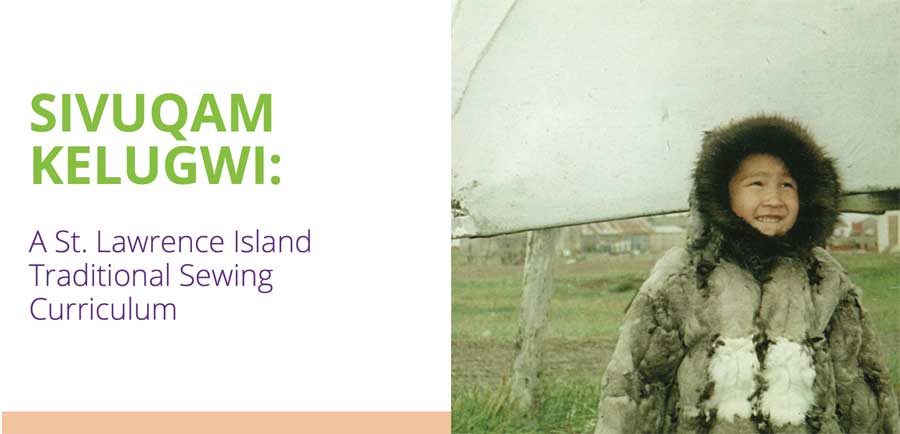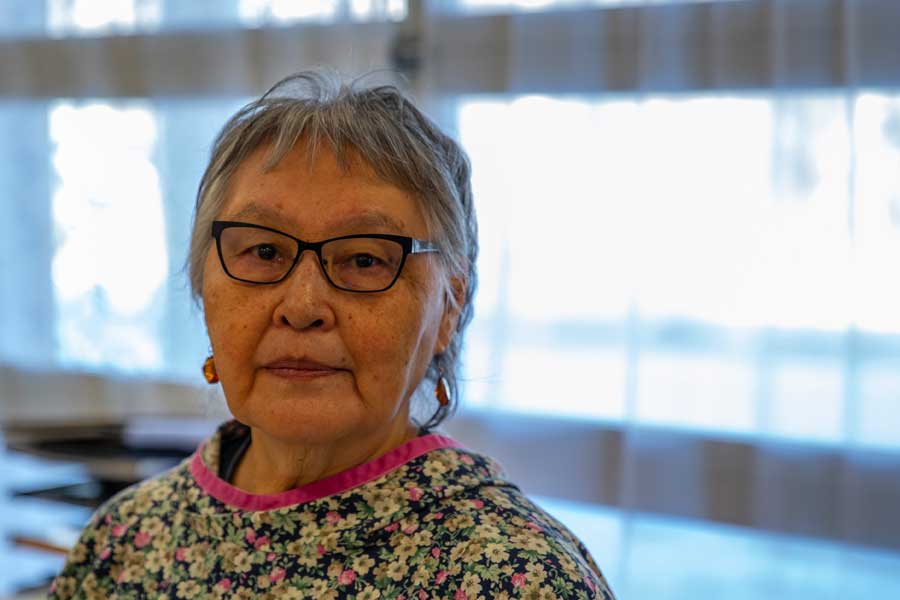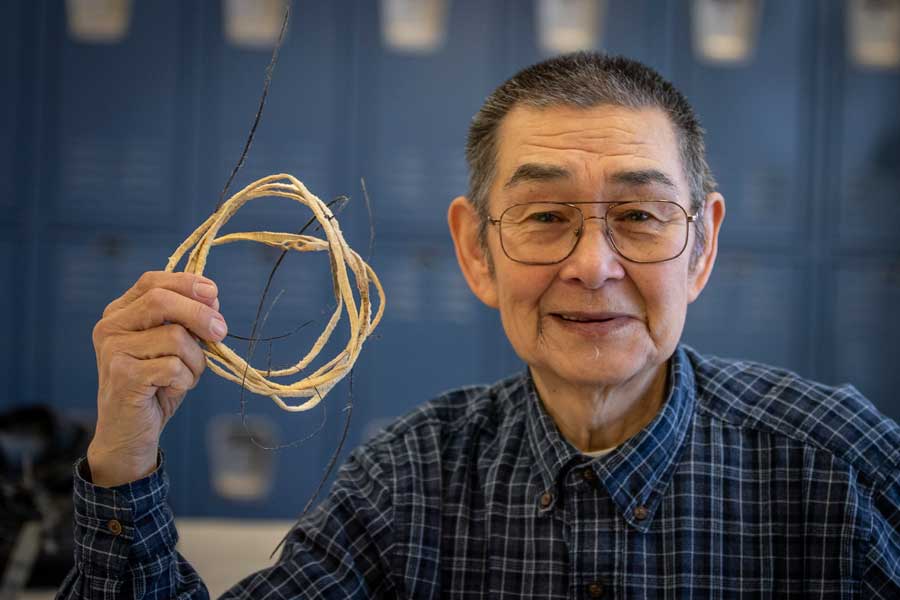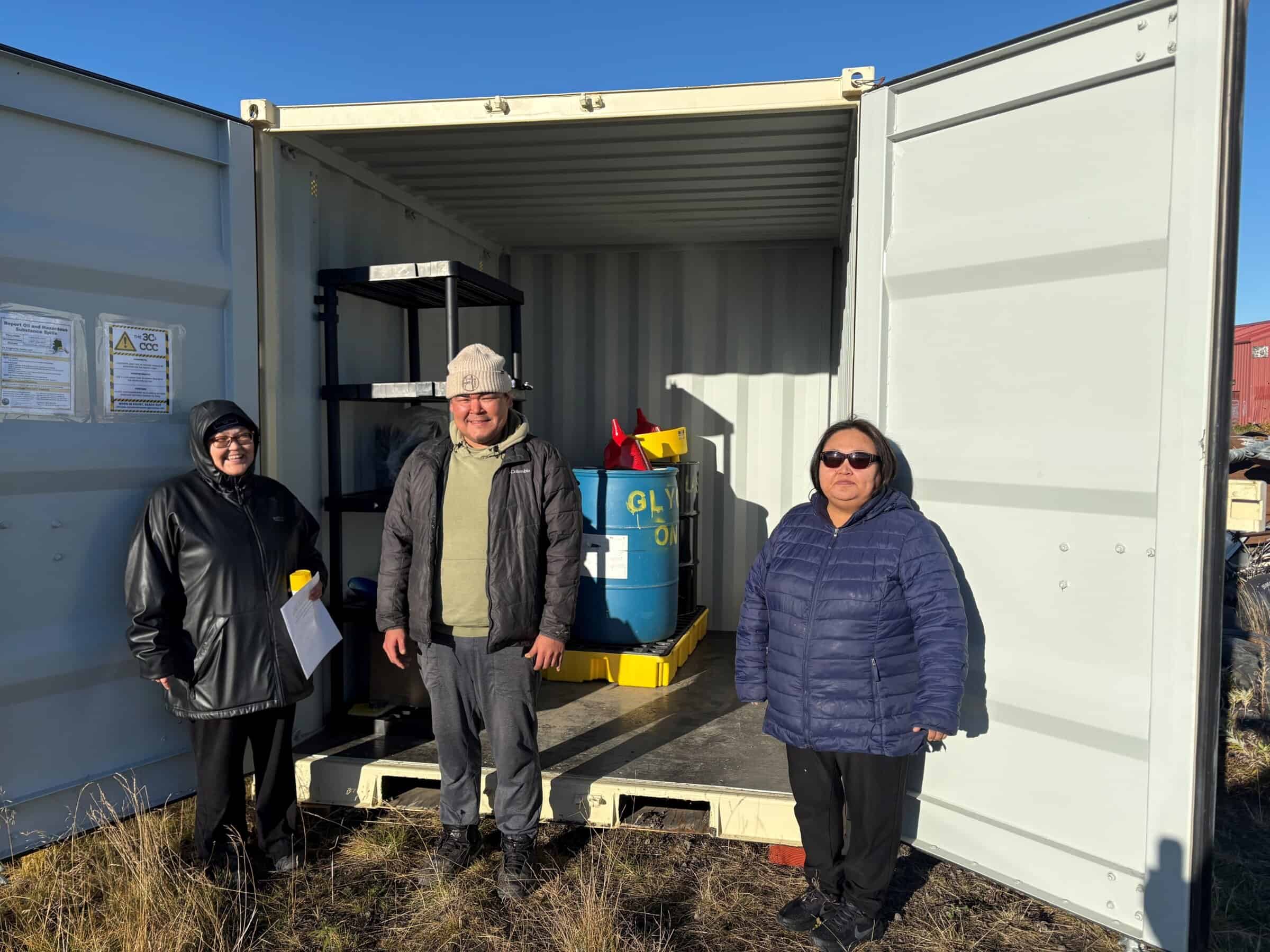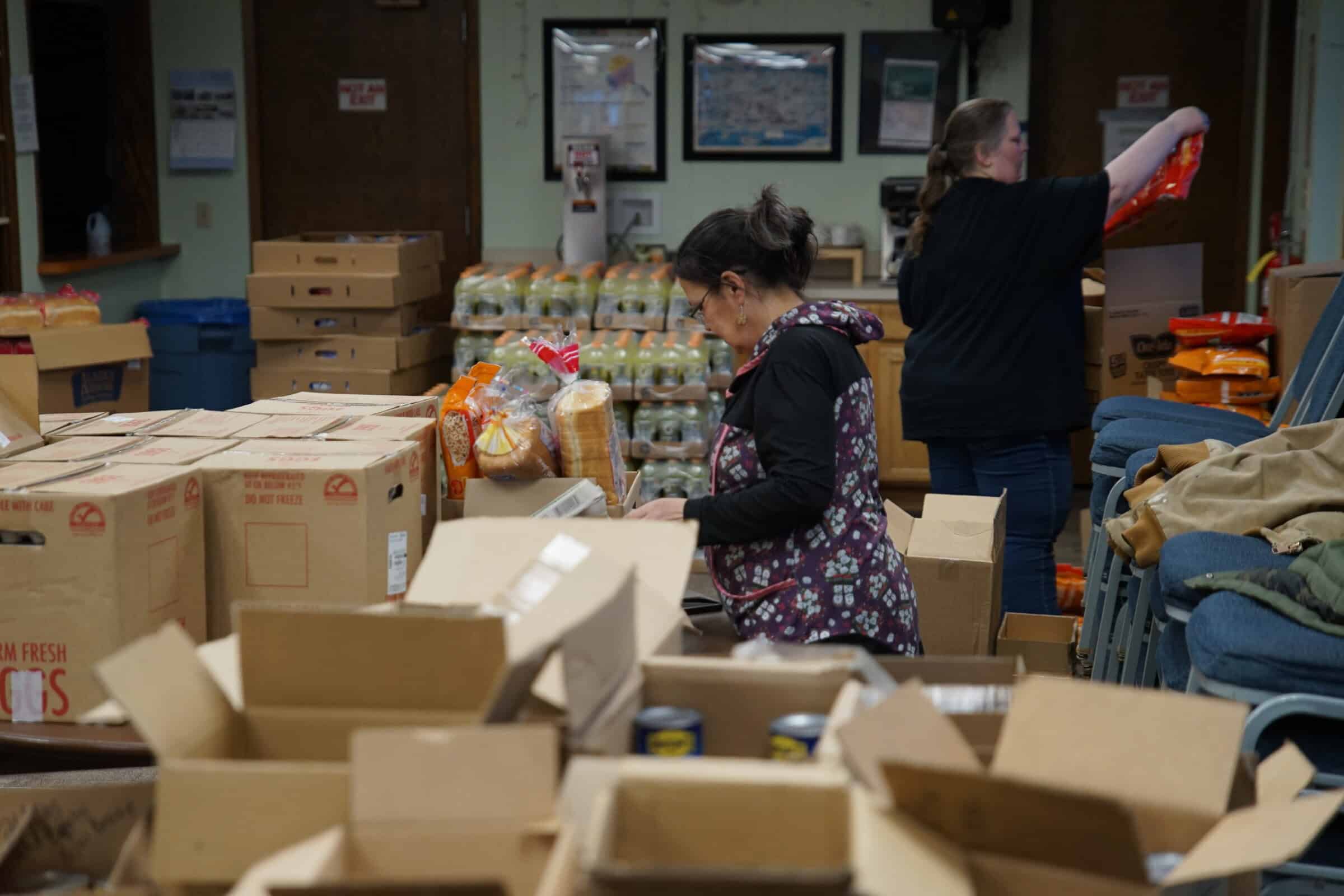Preserving Traditions, Increasing Cultural Education, and the Art Economy
Skills such as skin sewing were essential to the survival of our ancestors. In the past, these traditions were passed down from generation to generation inside a tent by a seal oil lamp, or in a small home surrounded by loved ones. In the present day with the Western education structure, the knowledge held with our culture bearers can at times seem impossible to access. But with an idea and a passion to ensure cultural knowledge remains alive for the future generations, Lydia Apatiki of Sivuqaq recently published “Sivuqam Kelugwi: A St. Lawrence Island Traditional Sewing Curriculum” complete with downloadable patterns, online videos, powerpoints, and tutorials for students to learn how to make aangquq (game ball), taghnughhaghwaaq (St Lawrence Island cloth doll) and atkuk amighqwaaq (birdskin parka). All of this is available on the newly-launched website: www.lydiaapatiki.com.
The journey to get to the final product was not an easy one, but it began with Lydia’s dedication to preserving the knowledge of her ancestors. The connections to find the resources to turn her desire to a reality started at a Native Artists Professional Development Training offered in partnership between Kawerak Inc. and First People’s Fund. It was here that Lydia identified a grant opportunity that could cover the costs of designing and printing a hard copy of the teachings she held in her head. She dreamed her knowledge could then be passed on to the next generations for lifetimes to come.
Through her experience with the schools, Lydia knew that if the traditional practices of sewing were taught in this formal setting, more youth would be exposed to their culture. She knew the traditional technique and interconnected language and values could be lost if it wasn’t preserved somehow. “By documenting the sewing practices, our young generations will learn about our traditional values, practice St. Lawrence Island Yupik terminology, and learn the traditional stitches,” Lydia commented. “They will become cultural bearers to keep our culture and language alive.” Her passion for educating young people led her to offer the curriculum free to schools who are willing to implement it. School districts can reach out to Lydia through her website (www.lydiaapatiki.com) to obtain the curriculum.
Partnow Consulting assisted Lydia with crafting her information in a way for teachers to utilize it for a curriculum to ensure it was easy to use and applicable in a school setting. Patricia Partnow, 48 year veteran researcher & writer, commented on the project’s value, “Most coastal people in Alaska made parkas out of bird skins, and there are many examples in museums, but Lydia is the only person I know who has made one herself using the knowledge from her elders….What a loss if we had not been able to record this bit of human knowledge. And how lucky we are that we have the whole process in the curriculum, from getting the birds to sewing the parka. I don’t know of a comparable curriculum anywhere.” Apatiki has also made it a priority for the curriculum to be free to educational institutions, so funding would never be a barrier for students to reach their culture. “It is important to know where you come from, to know your language a, traditional values and skills,” Lydia says.
The curriculum goes farther than simply offering a pattern and written instructions on how to make items like the aangquq. Through layers of instruction available online, Lydia integrates language learning, hunting skills, material preparation, and cultural values. Lydia realizes that in creating these items it’s not just about the end product. Values, language, and traditions are so carefully intertwined in these cultural practices that you lose so much trying to teach one without the others. And utilizing modern technology like video makes it more accessible to youth and more understandable for teachers.
The videos that accompany the projects show hunting techniques and practices, traditional songs, sewing techniques, and celebrations. Due to the variety and depth of content, challenges in communication and funding, and expert consultation for development and design, the curriculum took 2 years to complete. The support of partners like Kawerak, First People’s Fund, CIRI Foundation, Bering Sea Lions Club, Partnow Consulting and Gales Communications and Design, was crucial to the project. “We want people to know their knowledge is valuable, their skills are valuable, and they have the ability to use this to provide for themselves and their families,” says Alice Bioff, Business Planning Specialist with Kawerak. “This project is exciting because it blends tradition and technology, education and business, culture and art all in one.” Although the curriculum is free to educational institutions, anyone will be able to purchase the curriculum online and have access to all the materials and downloads. This fee will support the hosting of the online sharing platform and ideally also return a profit to the Apatiki family.
Cultural knowledge that took lifetimes and generations to develop, documented by local people, continuing on a tradition that will be available for generations to come is in itself making history. As Patricia Partnow reflects “From the viewpoint of history alone, she (Lydia) and her art are a treasure.”
If you are an individual wishing to purchase the sewing curriculum, please visit www.lydiaapatiki.com. If you are a school wishing to use the curriculum for your students please contact Lydia thorugh her website www.lydiaapatiki.com or contact Alice Bioff 907-443-4366. If you are an artist with an idea, and need support for it to come to fruition, please contact Kawerak’s Business Planning Specialist Alice Bioff, 443-4366 or abioff@kawerak.org.
Article by: Danielle Slingsby, Outreach Director, Kawerak Inc
Photos (headshots) by George Stransky with permission from Lydia Apatiki

